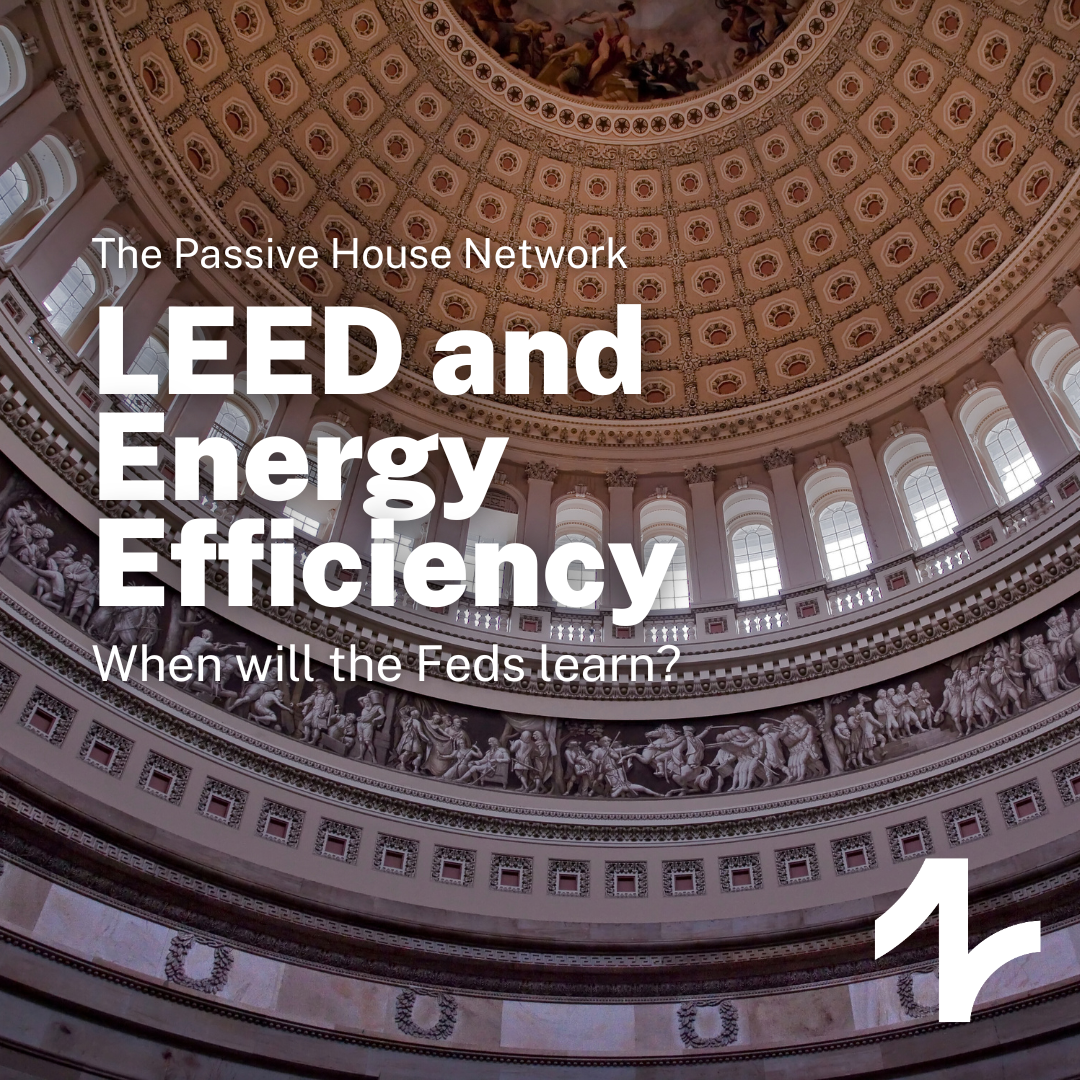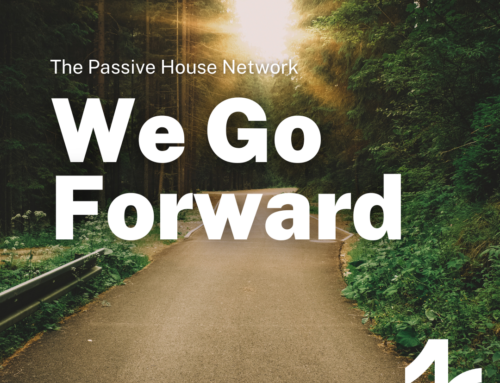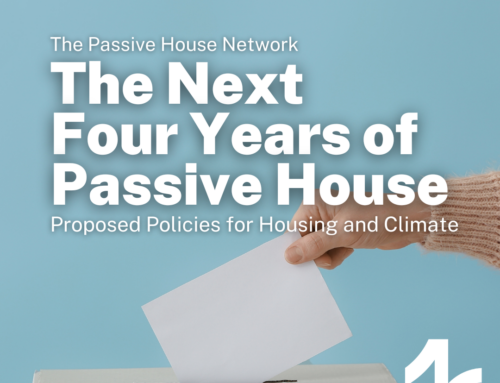LEED and Energy Efficiency:
When will the Feds Learn?
When energy efficiency and the benefits that derive from it are the primary objective, Passive House has set a clear path connecting the dots, producing efficient, healthy, comfortable, affordable, resilient buildings that are built to last. These standards result in unparalleled climate change mitigation and adaptation. However, following the Energy Independence and Security Act of 2007 the Feds selected LEED as their building standard of choice. At the time, LEED was a driving force in commercial green building marketing, and despite years of evidence that it’s not lived up to its name, it’s become a hard habit to break.
That 2007 Act required newly constructed or substantially renovated Federally-owned facilities to meet LEED Gold at minimum. An acronym for Leadership in Energy and Environmental Design, LEED is one of the most common green building rating systems, and at first glance, this requirement would seem to be a good step in improving building energy efficiency, but as noted in PHYS.ORG, a study titled Does LEED certification save energy? Evidence from retrofitted federal buildings by researchers Karen Clay, Edson Severnini and Xiaochen Sun at Carnegie Mellon, again finds that LEED building standards had no effect on average energy consumption. The study compared LEED buildings before and after retrofitting and similar buildings that were not LEED-certified.
The study also reminds us of previous work showing a similar lack of effectiveness, stating:
A number of engineering studies have compared the energy efficiency of LEED and non-LEED buildings. Although they found no energy savings, the analysis was not causal. In an appendix analysis using a methodology similar to ours, Qiu and Kahn (2019) estimated the impacts of LEED certification for commercial buildings in Phoenix, Arizona, and found a zero effect as well. Data from private commercial buildings are proprietary and, therefore, difficult to access. Our paper builds on this literature by providing the first nationwide causal estimates of energy savings from the LEED program using data from a national sample of federal government buildings.
(For more on these LEED building studies, see Wedding and Crawford-Brown, 2008, Scofield, 2009, Scofield, 2013, Scofield and Doane, 2018.)
To become LEED certified, buildings are scored on six attributes. These include energy & atmosphere, materials & resources, indoor environmental quality, sustainable sites, water efficiency, and innovation in operators. We appreciate the wide range of sustainability concerns LEED addresses. While weighed heavily in scoring, energy efficiency is just one piece of the larger puzzle and something that might be traded off for improvements in the other five attributes. Its holistic system means that a building’s energy efficiency can be put on the back burner while still achieving certification, leading to “green buildings” that aren’t as green as we think.
The study concludes in part:
The available evidence points to three factors driving the lack of energy savings: trade-offs across energy and other areas in acquiring points for certification; possible changes in energy use after the official performance period for LEED certification ended; and improvements in the energy efficiency of all federal buildings.
“Energy use is just one of a number of attributes that is scored under the LEED program…If energy efficiency is the primary goal, LEED certification may not be the most effective means to reach that goal,” said Edson Severnini, co-author of the study and associate professor of economics and public policy at CMU’s Heinz College.
On the other hand Passive House offers a focused building approach that instead of trading off efficiency, aligns efficiency with health, comfort, resilience and affordability. You want to future proof your buildings? Yes? Then be more efficient. It’s a simple lesson Passive House demonstrates every day. We hope the Feds are learning it too.
So, if you’re required to implement LEED or if you appreciate the wide range of sustainability goals LEED addresses, as we do, the good news is Passive House and LEED Certification are in fact compatible. You don’t really need to choose – you can do both, and lock-in superior energy efficiency for the lifetime of your building.
Energy efficiency has become a driving force behind the United States’ sustainability and climate goals, and the climate clock is ticking. Will you answer the call? Join us in our quest to secure safe, comfortable, efficient buildings for all.
Start your journey to becoming a Certified Passive House Designer today!





